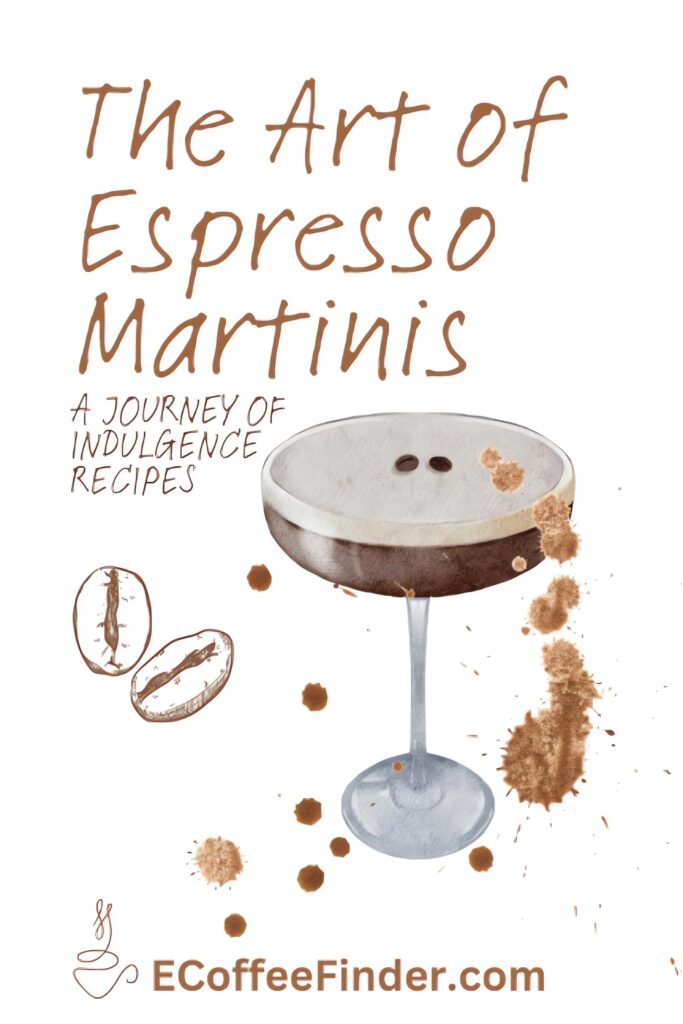Unveiling the Secrets of Perfect Espresso Martini Foam
There’s something magical about sipping an expertly crafted espresso martini. It’s bold yet smooth, energizing yet indulgent. But what truly sets an exceptional espresso martini apart from a mediocre one? You guessed it—it’s the foamy, velvety top that crowns this cocktail like a frothy halo. Espresso martini foam is more than just garnish; it’s the hallmark of craftsmanship, science, and attention to detail.
As the chief editor of The Bean Life—your ultimate online destination for coffee lifestyle content—I’ve spent years uncovering the chemistry and barista tricks that make the perfect coffee-based cocktails. As someone who geeks out over everything from crema thickness to foam density, I promise you: nailing the espresso martini foam is a game-changer for bartenders and home mixologists alike.
In this blog post, we’ll dive deeper than the surface-level shake. I’m here to walk you through the science, techniques, tools, and most common pitfalls when it comes to achieving that gorgeous top layer of coffee crema-inspired bliss. Expect to leave this page with expert knowledge and actionable steps to wow your guests—or simply elevate your solo cocktail night.
Whether you’re a coffee connoisseur, a cocktail enthusiast, or both (high five!), this article will give you everything you need to know about mastering espresso martini foam. Expect barista-level secrets, verified by science and topped with a touch of creative flair. Let’s shake things up!
Ready to unlock your espresso martini’s full potential? Let’s mix, shake, and foam our way to cocktail perfection.
What Is Espresso Martini Foam and Why It Matters
Espresso martini foam is that rich, creamy layer that floats serenely on top of your cocktail glass. It’s not just a visual delight—it enhances aroma, texture, and even flavor dispersion. Think of it as the crema on your espresso shot, but with a boozy twist. It’s crafted through the emulsification of espresso, coffee oils, alcohol content, and—most importantly—the air from a vigorous shake.
Why does it matter? Because presentation counts. A latte without foam might still taste good, but it won’t have that café-level visual sophistication. Similarly, a flat espresso martini feels unfinished. When the foam layer is thick, creamy, and long-lasting, it signals a perfectly executed drink. It also carries the drink’s aroma close to your nose, enhancing the flavor experience for each sip. That velvety touch? It makes your espresso martini linger long after the last drop.
Secrets to Creating Long-Lasting Espresso Martini Foam
Let’s get into the nitty-gritty of making a foam so thick you can almost rest a coffee bean on top. Here are the keys to creating the perfect espresso martini foam every time:
- Fresh Espresso: Always brew or pull your espresso shot right before shaking. Old espresso loses the aroma, acidity, and coffee oils needed for foam production.
- Use High-Quality Beans: A naturally oily medium or dark roast will contribute more to your foam stability. Less oil = flatter foam.
- Shake It Like You Mean It: Dry shake (no ice) first to emulsify, then wet shake (with ice) to chill and dilute. This two-step shaking method is the golden rule for incredible foam.
- Fine Mesh Strain: A double strain can help catch any micro-particles that weigh down your foam, keeping it light and airy.
The magic lies in giving your ingredients room to emulsify. That’s why shaking hard isn’t optional; it’s essential. The difference between a lazy shake and a rigorous one can make or break your foam.

Tools Every Home Bartender Needs for Perfect Foam
If you’ve been disappointed by flat-topped cocktails in the past, check your gear. The right tools can level up your espresso martini foam from amateur to awe-inspiring. Here’s what you absolutely need:
- Boston Shaker: More space = more aeration. A Boston shaker allows for aggressive shaking without spilling.
- Fine Mesh Strainer: Prevent coffee grounds or ice shards from disrupting your silky foam layer.
- Espresso Machine or Moka Pot: While espresso machines offer ideal pressure, a good moka pot can also create a rich shot with decent crema.
- Chilled Coupe Glass: Foam sits better atop a cold glass, just like crema holds better on a hot espresso cup.
Bonus: Invest in high-quality liqueurs and spirits. Cheap vodka or inferior coffee liqueur won’t emulsify as well and can leave your foam looking sad and split. You don’t need to go top-shelf, but quality makes a tangible difference.
Espresso Martini Foam Hacks from the Pros
Even experienced bartenders struggle with consistency when it comes to espresso martini foam. Want an insider edge? Here are a few pro hacks to take your cocktail to the next level:
- Use an Egg White: Want insane silky foam and don’t mind mixing tradition with innovation? Add a splash of egg white during your dry shake. Just know that this slightly alters taste and mouthfeel.
- Try Aquafaba: A vegan alternative to egg white, aquafaba (the brine from chickpeas) adds similar texture and stability without altering the espresso’s flavor.
- Pre-chill Everything: The colder your ingredients, the longer your foam lasts. Shaking warm espresso with room-temperature vodka won’t cut it. Think fridge-cold vermouth, freezer-chilled vodka, and fresh pulled espresso.
FAQs About Espresso Martini Foam
Why is my espresso martini foam so flat?
Flat foam is often the result of under-shaking, stale espresso, or low-quality beans lacking essential oils. Always perform a dry shake before adding ice, and use fresh-brewed espresso for the best results.
Can I use cold brew instead of espresso for foam?
Cold brew lacks the crema and oils necessary to produce thick foam. While it will taste good, visually and texturally you’ll miss out on signature espresso martini foam.
Is there a non-alcoholic way to enjoy espresso martini foam?
Absolutely! Just replace the alcohol with cold brew concentrate or coffee syrup and follow the same shaking technique. For foam, egg white or aquafaba still help emulsify non-alcoholic versions.
What’s the best espresso machine for at-home espresso martinis?
A semi-automatic espresso machine offers a perfect balance between control and ease. Models like the Breville Barista Express are ideal for producing proper crema essential for espresso martini foam.
How long should I shake to achieve ideal foam?
Dry shake vigorously for 15–20 seconds, then wet shake with ice for another 20–30 seconds. The total shake time should be at least 40–60 seconds for that thick, rich foam.
Conclusion: Master the Art of Espresso Martini Foam
To sum it up—espresso martini foam isn’t just a pretty top layer. It’s the soul of the drink. It tells your guests (or your Instagram followers) that you know your stuff. From using fresh espresso and the right shaking techniques to investing in bar tools and using egg whites or aquafaba, there are dozens of ways to master the craft.
But remember, coffee is as much art as it is science. So take these tips, get behind your home bar, and start experimenting. Once you’ve nailed down your personal foam style, you’ll never settle for a flat espresso martini again. And neither will your friends!
Let’s Keep the Coffee (and Conversations) Flowing!
We’d love to hear from you! Drop us a comment below:
- What’s your favorite espresso martini recipe variation?
- Have you tried any of the foam tips we talked about? Share your results!
- What’s your go-to tool behind the bar when making coffee cocktails?
- What other coffee-cocktail topics would you love us to dive into?
Don’t forget to share this post if you found it helpful. Let’s make every espresso martini a masterpiece—one perfectly creamy foam layer at a time.
